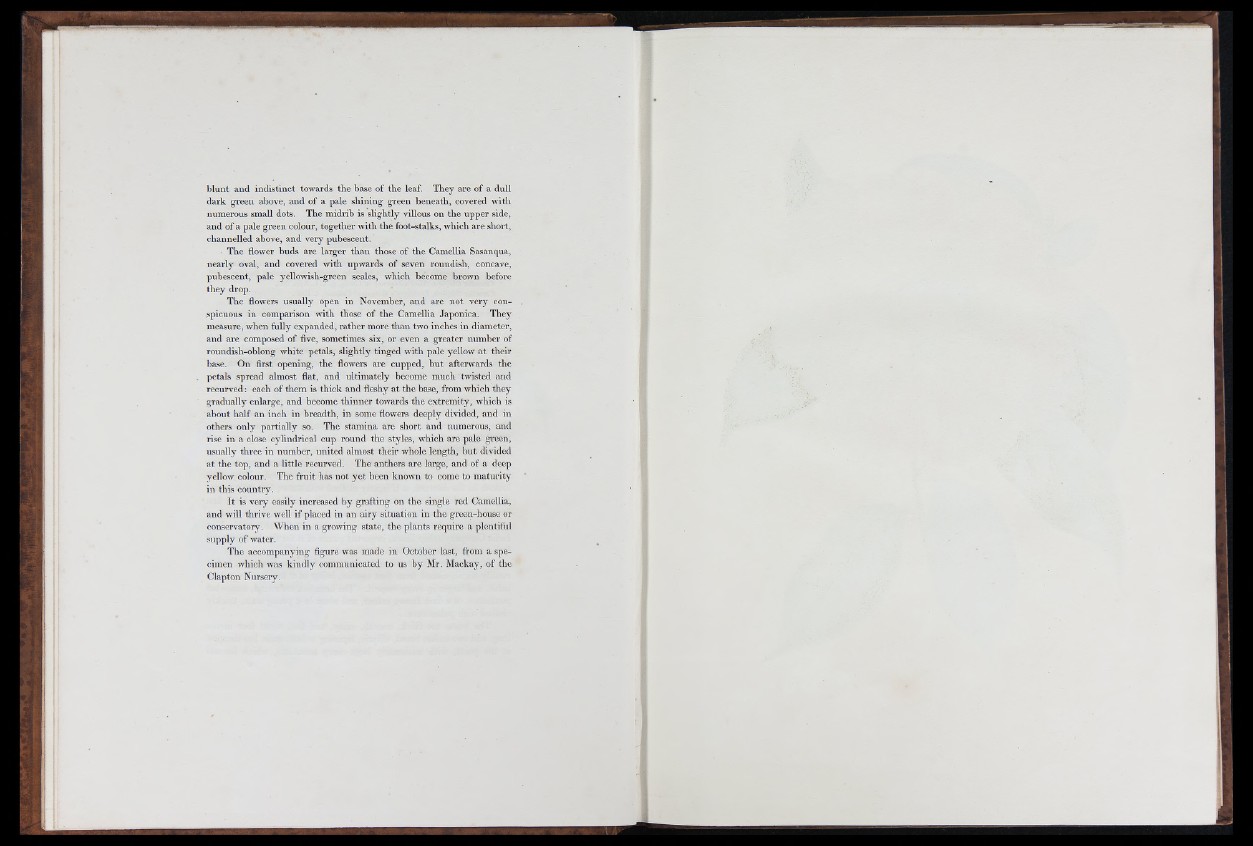
b lu n t and indistinct towards the base of the leaf. They are of a dull
dark green above, and of a pale shining green beneath, covered with
numerous small dots. The midrib is slightly villous on the upper side,
and of a pale green colour, together with the foot-stalks, which are short,
channelled above, and very pubescent.
The flower buds are larger than those of the Camellia Sasanqua,
nearly oval, and covered with upwards of seven roundish, concave,
pubescent, pale yellowish-green scales, which become brown before
they drop.
The flowers usually open in November, and are not very conspicuous
in comparison with those of the Camellia Japónica. They
measure, when fully expanded, rather more than two inches in diameter,
and are composed of fi.ve, sometimes six, or even a greater number of
roundish-oblong white petals, slightly tinged with pale yellow a t their
base. On first opening, the flowere are cupped, b u t afterwards the
petals spread almost flat, and ultimately become much twisted and
recurved: each of them is th ick and fleshy a t tlie base, from which they
gradually enlarge, and become th in n er towards the extremity, which is
about h alf an inch in breadth, in some flowei-s deeply divided, and in
others only partially so. The stamina are short and numerous, and
rise in a close cylindrical cup round the styles, which are pale green,
usually three in number, united almost their whole length, b u t divided
a t the top, and a little recurved. The anthera are large, and of a deep
yellow colour. The fruit has not y et been known to come to maturity
in this country.
I t is very easily increased by grafting on the single red Camellia,
and will thrive well if placed in an airy situation in the green-house or
conservatory. When in a growing state, the plants require a plentiful
supply of water.
The accompanying figure was made in October last, from a specimen
which was kindly communicated to us by Mr. Mackay, of the
Clapton Nursery.